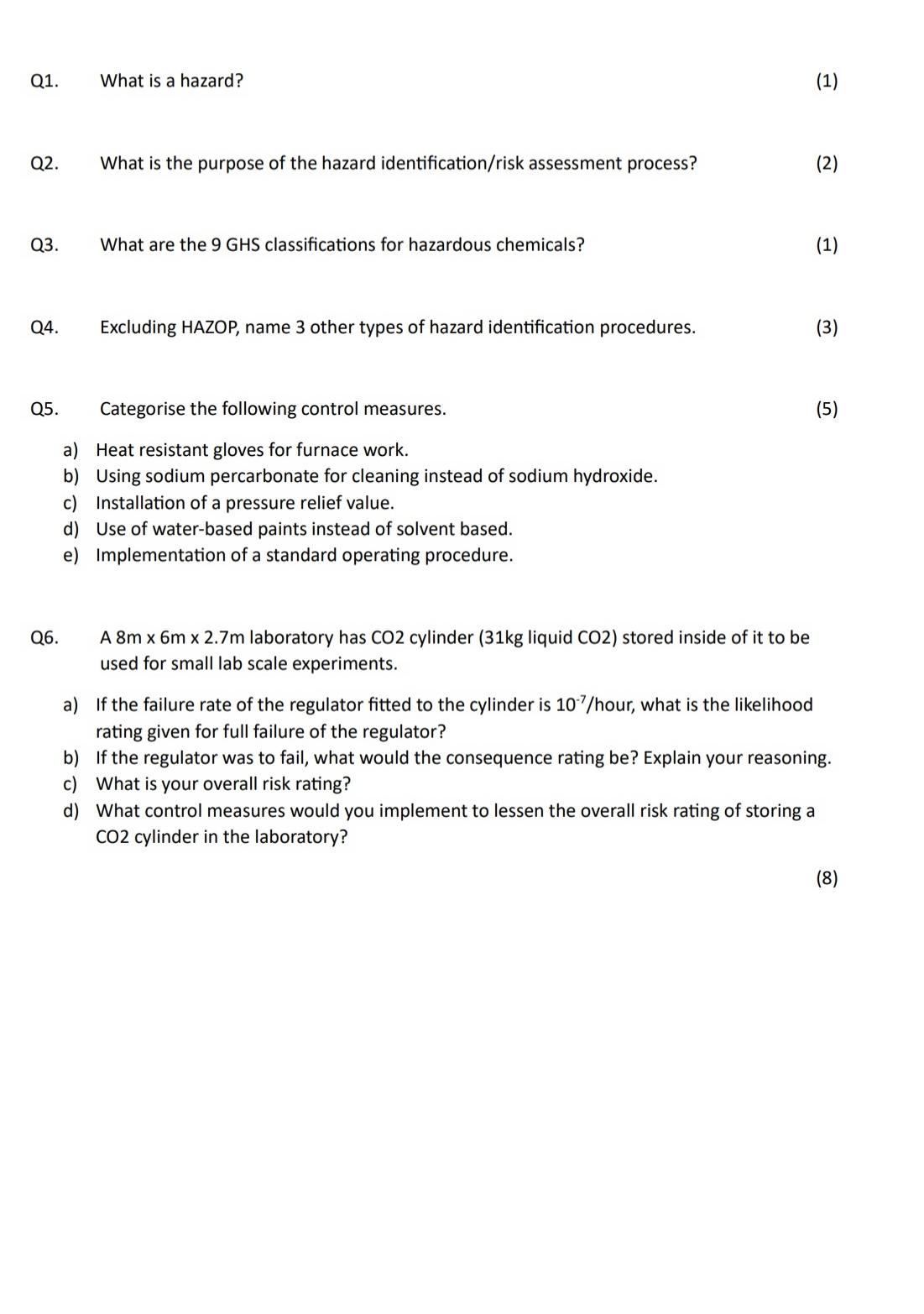Answered step by step
Verified Expert Solution
Question
1 Approved Answer
Q1. What is a hazard? (1) Q2. What is the purpose of the hazard identification/risk assessment process? (2) Q3. What are the 9 GHS

Q1. What is a hazard? (1) Q2. What is the purpose of the hazard identification/risk assessment process? (2) Q3. What are the 9 GHS classifications for hazardous chemicals? (1) Q4. Excluding HAZOP, name 3 other types of hazard identification procedures. (3) Q5. Q6. Categorise the following control measures. a) Heat resistant gloves for furnace work. b) Using sodium percarbonate for cleaning instead of sodium hydroxide. c) Installation of a pressure relief value. d) Use of water-based paints instead of solvent based. e) Implementation of a standard operating procedure. (5) A 8m x 6m x 2.7m laboratory has CO2 cylinder (31kg liquid CO2) stored inside of it to be used for small lab scale experiments. a) If the failure rate of the regulator fitted to the cylinder is 107/hour, what is the likelihood rating given for full failure of the regulator? b) If the regulator was to fail, what would the consequence rating be? Explain your reasoning. c) What is your overall risk rating? d) What control measures would you implement to lessen the overall risk rating of storing a CO2 cylinder in the laboratory? (8)
Step by Step Solution
There are 3 Steps involved in it
Step: 1

Get Instant Access to Expert-Tailored Solutions
See step-by-step solutions with expert insights and AI powered tools for academic success
Step: 2

Step: 3

Ace Your Homework with AI
Get the answers you need in no time with our AI-driven, step-by-step assistance
Get Started


